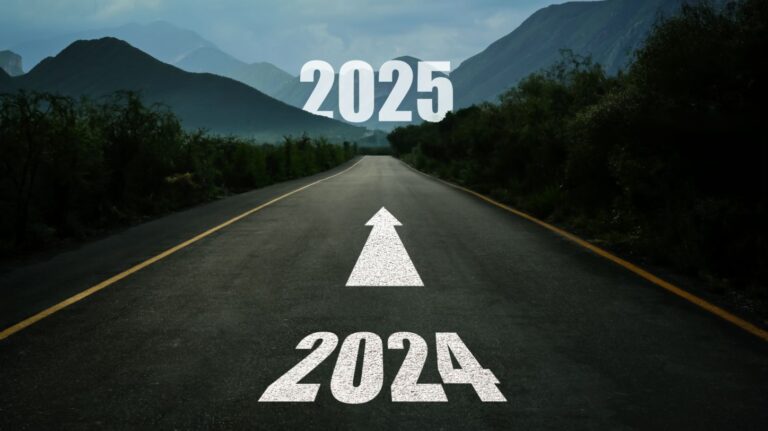City Transport & Traffic Innovation (CiTTi) Magazine sat down with transport and mobility experts to predict what trends and developments can be expected in the urban mobility sector in 2025.
Peter O’Driscoll, Managing Director, RingGo
 In 2025, we predict that the parking industry will undergo significant transformation, driven bygreater integration, standardisation and digitalisation. Mobility solutions will focus on improving efficiency, reducing congestion,and supporting sustainability goals. Parking apps will evolve into one-stop shops for motorists, integrating services such as electric vehicle (EV) charging, fuel payments and dynamic pricing to simplify the user experience and encourage greener choices.
In 2025, we predict that the parking industry will undergo significant transformation, driven bygreater integration, standardisation and digitalisation. Mobility solutions will focus on improving efficiency, reducing congestion,and supporting sustainability goals. Parking apps will evolve into one-stop shops for motorists, integrating services such as electric vehicle (EV) charging, fuel payments and dynamic pricing to simplify the user experience and encourage greener choices.
Both dynamic pricing and emissions-based charges will take centre stage, with vehicle weight becoming a key factor in fees. As EVs grow larger and heavier, local authorities will adopt these models to address congestion and safety concerns.
Platforms that feature emissions-based charges will play a pivotal role in enabling smarter and more sustainable parking solutions. In 2025, we also predict the full-scale rollout of the National Parking Platform (NPP), creating an open market for parking across the UK. The NPP will allow drivers to use their preferred apps nationwide, offering greater convenience and flexibility. Local authorities and operators will benefit from reduced costs and access to richer parking data to inform urban planning and traffic management. As systems consolidate and public-private collaboration grows, 2025 will deliver smarter, more seamless parking experiences, fostering safer, greener, and more liveable cities.
Rolf Bienert, Technical & Managing Director, The OpenADR Alliance
 In 2025, we predict the demand for electric vehicle (EV) charging infrastructure in cities will continue to grow, with EV owners expecting fast, reliable, and secure charging. Equitable access to EV charging points will remain critical, requiring easily located facilities with accurate, real-time information on availability and pricing.
In 2025, we predict the demand for electric vehicle (EV) charging infrastructure in cities will continue to grow, with EV owners expecting fast, reliable, and secure charging. Equitable access to EV charging points will remain critical, requiring easily located facilities with accurate, real-time information on availability and pricing.
Building confidence in a viable network of fast charging points in convenient locations will be essential. While the UK government’s 2022 Electric Vehicle Infrastructure Strategy set a vision for the rollout, even more must be done to create a fit-for-purpose system. Certainty in the market is needed for EV chargepoint operators, city planners, automotive manufacturers and buyers, especially regarding firm dates for phasing out sales of new petrol and diesel vehicles.
Technology will also play a key role. EV owners will increasingly demand greater control over when, where, and how they charge their vehicles. Improved communication between suppliers and customers, supported by standardised data on pricing, energy consumption, and capacity, will enable more effective load control. The growing electricity demand from urban mobility electrification will challenge energy supply but also offer opportunities for demand-side flexibility. A well-designed system will empower energy suppliers to respond dynamically to fluctuating demand, ensuring a reliable and sustainable transition.
Paulo Santos, CEO, UbiRider

In 2025, contactless payments will revolutionise transit systems worldwide, eliminating unnecessary friction in travel. Fare payment is uniquely complex in transportation, requiring instant processing to maintain flow and avoid delays. Traditional systems relying on travel cards introduce inefficiencies for both users and providers, from the hassle of topping up to the costs of vending machines and card stock. Smartphones and contactless bank cards have made payment effortless.
Transport for London (TfL) pioneered direct contactless bank card payments in 2012, expanding to Apple Pay, Google Pay and Samsung Pay by 2017, reducing reliance on Oyster cards. Looking ahead, integrated traveller portals will allow users to pay for transit, parking, tolls and more, while tracking trips, payments, and even carbon footprints.
Rewards and benefits could also enhance the experience for frequent users. However, traditional fare systems enabling contactless payments remain complex and costly, viable mainly in high-ridership urban areas. Mobile and cloud-based software solutions are stepping in to bridge this gap, offering simpler, more affordable options. These innovations reduce costs, enhance user experience, and unify systems across urban, suburban and rural areas, expanding access to seamless transport. The future of travel is in your pocket – your smartphone or bank card.
Philip Kershaw, Director of eBus, EO Charging

In 2025, we anticipate the rise of fully electric cities as local governments and infrastructure developers prioritise sustainable and scalable solutions for urban transit. These plans will extend beyond passenger electric vehicles (EVs) to include buses, delivery vehicles and other service fleets essential to city life. Leading cities will focus on high-capacity charging hubs, renewable energy integration and smart grid systems to create fully electric urban environments.
The public transport sector will see significant EV infrastructure expansion, driven by government funding schemes such as the Zero Emission Bus Regional Areas (ZEBRA) and Scottish Zero Emission Bus Challenge Fund (ScotZEB). These initiatives help public transport operators overcome the high costs of fleet electrification, enabling faster adoption.
In 2025, mayoral regions and local transport authorities are expected to adopt high-capacity, scalable electrification models rather than piecemeal approaches.
This shift will streamline fleet electrification, improve charging accessibility and encourage further public infrastructure investment, benefiting private and commercial EV users alike. As fleets account for a significant portion of transport emissions, their electrification will make a major contribution to the UK’s net zero goals. By 2025, these developments will lay the foundation for long-term sustainable mobility across the public transport network.
Edward Kulperger, Senior Vice, President, Geotab EMEA

I believe 2025 will see privacy-first principles reshape urban mobility. Data aggregation is critical for infrastructure planning, but trust remains paramount. Ethical handling of data isn’t just compliance – it’s the cornerstone of designing smarter, more sustainable cities.
Strategic investments informed by this trust will redefine transport systems, enhancing safety, efficiency and inclusivity. Also, AI is no longer a buzzword – it’s a critical enabler and that’s something that will ramp-up across the next 12 months.
This year, AI systems will process vast datasets to identify collision risks, optimise routes, and predict maintenance needs. These advances represent more than technical progress; they mark a safety revolution, offering drivers predictive insights for smoother, safer journeys.
For fleets, AI’s potential lies in ‘reasoning’ models or AI agents that provide real-time road insights. But with great power comes great responsibility. Transparency, ethical AI use, and data privacy are non-negotiable. Companies leading with these values will set the benchmark for responsible innovation, showing that technology and trust go hand in hand. By leveraging AI’s capabilities and upholding strong ethical standards, we can redefine urban mobility for the better.
This article was originally published in the February 2025 issue of CiTTi Magazine.
Achievements and innovations in river services will be recognised and celebrated at the fourth annual CiTTi Awards on 25 November 2025 at De Vere Grand Connaught Rooms in London. Visit www.cittiawards.co.uk to learn more about this unmissable event for the UK’s transportation sector!





